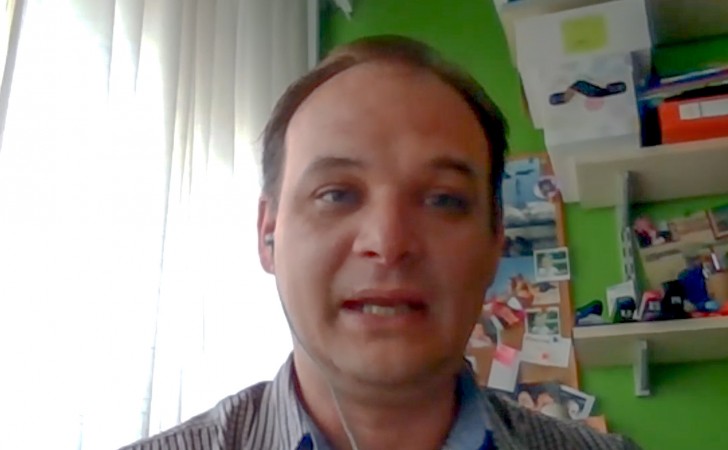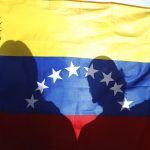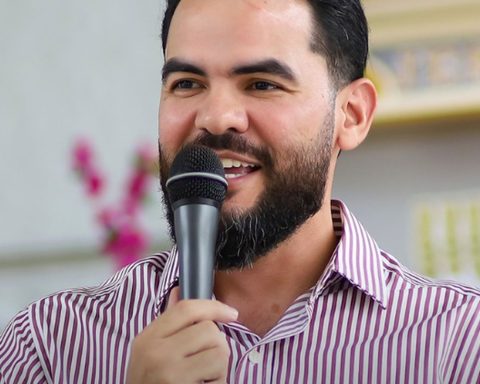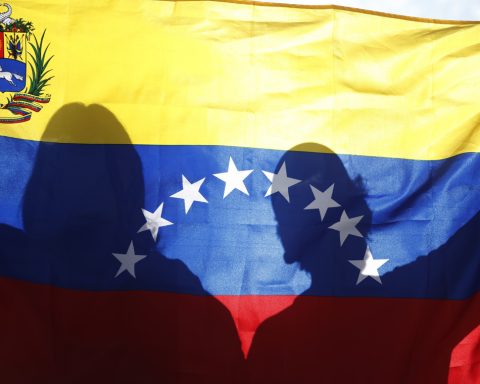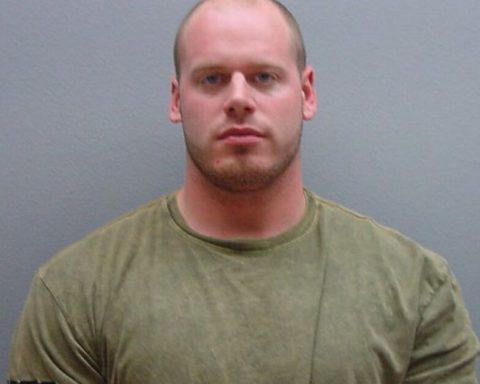Is this final stretch of the campaign key for the referendum on Sunday, March 27?
Not only in this, on the last week, important definitions can occur in terms of movements. There is a lot of stability, but it happens that the last week ends up moving. Mainly in this case, that you arrive with a very important percentage of doubtful people, that is, who turn to one of the options and totally indecisive people. Looking at that factor, which is decisive in numerical terms, for either of the two options (Yes) or (No), they have to target that doubtful and they also have to pick within the undecided. So, in that sense, the movements that occur in that last week are key, not only of the undecided but of the doubtful and sometimes there are also changes of position. When we have two options, such as a runoff or a referendum or plebiscite, when there are two options, the movements have more important effects. That a person moves from Yes to No, implies that he subtracts from Yes and adds to No. It is the double effect, not one point moves, but two. In that sense, this last stretch of the campaign is very important. It cannot be anticipated how much movement there may be between the Yes and No options.
With referendums there are usually more indecisive and doubtful. People without firm definition.
Is the number of undecided important or is it usual?
Yes, in terms of pure undecideds, those who say I have no preference, not even a close one, is a reasonable number. What yes the sum with the doubtful increases in a relevant way in relation to what have been previous editions. Reviewing the background, in national elections, plebiscites that are held together with national elections, with referendums there are usually more indecisive and doubtful. People without firm definition. In this particular case, it has an additional explanation, the lack of information and the difficulties involved in the Law of Urgent Consideration (LUC) itself and the 135 articles that are to be annulled, and on the other hand, the moment in which it is carried out, at Being the inter-electoral period, it generates greater distance, especially with the less politicized population. Those are factors that may be influencing the greatest number of undecided.
(Undecided) They show no interest in politics and are not situated at either of the ideological extremes.
Is there a profile of undecided?
There are two profiles, one that is a minority, let’s say a quarter that is people who have a higher level of education, middle classes, who are interested in politics, making hypotheses let’s say they are looking for information to decide the vote. The other majority profile of the undecided is the usual one, younger people, with a lower educational level, from the lower and lower middle classes, a little more in the interior than in Montevideo. In Montevideo more in peripheral areas than in the center and disinterested or with a neutral interest in politics. He shows no interest in politics and is not situated at any of the ideological extremes. They tend to the center, I make the exception, people who are ideologically located in the center but also represent those who do not have an ideological position, and it has to do with disinterest in politics.
It’s pretty clear there’s a slight edge to No.
Is this last stretch of the campaign key because nothing has been decided?
It is not decided, it is quite clear that there is a slight advantage for the No. It does not have to do with the behavior from the point of view of the polls but with respect to the electoral behavior registered in 2019. What are the bases of own support that the two options? The big question is, is the Yes support base what the FA voted for in November or what it voted for in October? and for No, the same. Is it the parties that are represented in Parliament or is it the President (Lacalle Pou) and his political capital? Beyond that, it is clear that we cannot say that it is decided because of what we talked about before. What is the level of undecided? What is the volatility that can be had? Without a doubt, there is a clear example, the campaigns themselves modify, and that is what happened in November 2019. The 2019 polls that marked a greater distance from Lacalle Pou than what finally happened. There were a series of elements that show that what was happening was an approach of Daniel Martínez (FA candidate) to Lacalle Pou, the closer the survey was carried out, the less distance there was. It is something interesting, because in some way, they explain the last minute movements, the strategy used by the FA to support Daniel Martínez was based a lot on the territory and in some way it is being replicated now, if it is successful or not, the March 27th. It does seem to have that antecedent that gives the idea that there may be movements
How much does Yes need to win?
It depends on the amount of null votes, if we assume that the null votes behave in a similar way to what has happened before, the Yes to win needs between 1,150,000 to 1,200,000 votes. In other words, the Yes to win needs more votes than those that Daniel Martínez had in November 2019, hence the difficulty that even starting from the most favorable scenario for the Yes, it needs to grow compared to what was obtained in 2019. Bearing in mind that it has to exceed the sum of No plus all the blank votes. That is, it has to get more than half of the valid votes, removing the annulled ones. That 1,200,000 is a long stretch. If we have concentric circles where a circle of the FA and the social movements is closer to the Yes, as we move away from that center, the difficulty of accessing the different groups that exist in society increases. The collection of signatures beyond the instrumental, was the easiest, I’m not saying that collecting them was easy, on the contrary, it is an enormous difficulty to be able to collect them, but it was to aim at the closest thing. If we have 30, 33% who consider themselves to be Frente Amplio members, that is the volume of signatures that is needed, it is challenging but it is talking to those closest to us, to grow there is to look for those who voted for the FA even if they do not consider themselves to be Frente Amplio members, they are close but they are not the hard core. From then on they did not vote for the FA in the first round, but they voted for Daniel Martínez in November, they are angry with the government even though they voted for him, the nuances that are further away from the Yes option begin. Further away in the sense of belonging and of participation.
Does the blank vote accumulate for the No?
Yes, the blank vote is added to the No, that is contained in the law itself.
The canceled?
The annulment is not counted within the barriers that have to be overcome. The annulled vote is taken out, it is not counted. Of those that count the Yes, the No and blank, the Yes has to have more than half of the votes, in short, it ends up being that the Yes has to get more votes than the No and blank, so that the 135 items are cancelled. If the No more blank is more than the Yes, the 135 articles stand firm.
The 135 articles are very different, there are those who can say I agree with one article but I do not agree with another. The voter has to put in the balance what decision he makes
It is one of the greatest difficulties that this referendum has, it has a variety of issues, different from each other, but also, there is none that can be considered a “theme anchor”. To give an example: that within the LUC there was the privatization of public companies, there it would have an anchor where it could solidify and the others would be accessories. I give that example, because in the country, the studies (FACTUM) show us that there is a majority in favor of public companies, but here there is not that type of “anchor”here are issues that divide the majority, but they are so diverse, there are articles that may raise doubts, but others prefer them or think they are good, that creates enormous difficulty for the campaign.
The Yes campaign is trying to mark the price increases, but it is not that they increase from one day to the next. In addition, these increases land very close to the date of the referendum.
Regarding this political moment, where the government is concerned about the increase in the prices of the basic basket, can it influence the campaign?
At some point, the government itself handled it, although it has not made it public. When the collection of signatures began and the possibility of a referendum was raised, they began to talk about the referendum against the government and the government, the ruling party, said it cannot be proposed in those terms, and in the last stretch of the campaign it was proposed from that place, now it is saying “it is against the government” What happened in between? In the middle there was a lot of time from September to March, therefore, many things could happen, the government was well evaluated, but a wave of COVID could come, it could have been worse from a health, economic point of view, it could have been the season worse, employment might not have recovered, those kinds of issues that weren’t solid. Having passed in positive terms for the government, all these elements make him begin to say that he is against the government. It has arisen in the last few days, there is an increase in fuel prices, there is a world situation that has repercussions with a very important increase in prices. Indeed, there is the possibility that there is a group of people who end up entering with what is for or against the government and with the prices playing. The difference is that this happened very close to the referendum, there would have to be a spontaneous, immediate reaction against something that is gradual, such as the increase in prices, although it has higher moments. The Yes campaign is trying to mark the price increases, but it is not that they increase from one day to the next. In addition, these increases land very close to the date of the referendum.
Is the figure of the President key in this campaign?
The (President) contributes his capital to the No, seeking that the No wins, but at the same time, seeking that if the No wins, he is responsible for and the winner of that triumph.
It has been played in two directions, on the one hand by supporting the No probably to use the President’s own capital, it is not necessarily transferable, although there is approval for most of the government’s policies, there are some that are negatively evaluated but he holds a positive image. He seeks to translate that positive image into votes towards the No, on the other hand, to capitalize himself on a victory for the No. The (President) contributes his capital to the No looking for the No to win, but at the same time seeking that if the No wins, he be responsible and the winner of that triumph. Also the defeat will be charged to him, because he put everything. If he doesn’t win, it will be very good for the President, if he loses he will be in trouble.
